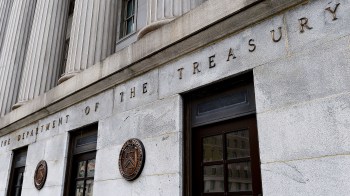Looking to put stimulus funds to work
TEXT OF INTERVIEW
Kai Ryssdal: Stimulus money should be trickling down to the real economy any day now. Helping cities and counties build bridges and repair roads. Coconino County in Northern Arizona is looking forward to its share. It’s pretty rural. Lots of outdoor work, some of which is done by young people trained by the Coconino Rural Environment Corps. They work on hiking trails and wildfire protection, things like that. The corps gets its money from a lot of different state and federal agencies. Dustin Woodman is the program manager. Dustin, you’re in line to get some of that stimulus money, too, aren’t you?
DUSTIN WOODMAN: We are. We’re excited about the opportunity for stimulus funding. We are monitoring opportunities from a number of sources. And are anticipating some substantial growth for our program and our ability to create jobs and provide job training.
Ryssdal: Do you have any sense of timing, as to when you might actually see some of this stimulus money?
WOODMAN: We’re actually starting to pursue the first of it right now. But the definite word seems to be a couple of weeks out still.
Ryssdal: Realistically, then, are we talking beginning of May, maybe?
WOODMAN: We’ve heard as early as mid-April. It could be beginning of May. We’re looking to gear up about the beginning of May, and then have some additional offerings maybe in July and September.
Ryssdal: Well, play it out for me. If you got a quarter-million dollars, $250,000, what would you do with it?
WOODMAN: It would really depend on the priorities of our partner agencies. We’ve been in discussions with the Grand Canyon National Park, for example. And they are anticipating some significant funding to do a number of recreational infrastructure improvement projects. This would be trail work on the highly trafficked corridor trails in the canyon, restoration of some historical sights, repair and rehabilitation of water pipe lines that service the south rim of the canyon. With the Forest Service, there may be priorities placed on community wildfire protection, so that money would go to reduced fuels on some significant acreage of forests that borders the rural communities of Northern Arizona.
Ryssdal: There are probably some people who on hearing this would say, “How is making new trails economic stimulus?”
WOODMAN: That’s an excellent question. When you look at the industry of Northern Arizona, we’re primarily based on tourism. The Grand Canyon, for example, attracts somewhere between 5 and 6 million people annually. One of the highest visitation rates in national parks in the country. And so the infrastructure in place for visitors to gain recreational opportunities is extremely important, and provides a great economic impact to the communities of Northern Arizona, in terms of sales-tax revenues and the like.
Ryssdal: Let me get all political on you here. And imagine that we’re in the next election cycle, and the local representative from Coconino County comes along, and says, “I need to know exactly how you benefited from the stimulus money. How we the community benefited.” Is there a way that our hypothetical representative could point to your program and the stimulus money it gets and say, “Well, we saved, you know, four jobs here and created two new ones there.”
WOODMAN: I do believe so. And that is our great hope with this funding, that we can expand our current workforce development programming. And we have in our minds a target of 300, as a result of recovery funding. Not only increase the amounts of works we do on public lands, and the number of jobs we create there, but also in these new areas of programming of energy conservation, water conservation. What our great hope is that we can provide job training that then leads to long-term career paths for young people in emerging green fields, and to fill vacant positions with public land managements agencies resulting from the retiring of the baby boomers.
Ryssdal: Dustin Woodman is the program manager for the Coconino Rural Environment Corporation, in Coconino County, Ariz., near Flagstaff. Dustin, we’ll check back with you when you get your money, all right?
WOODMAN: Sounds great. Thanks for the opportunity, Kai.
Ryssdal: All right, thanks a bunch.
There’s a lot happening in the world. Through it all, Marketplace is here for you.
You rely on Marketplace to break down the world’s events and tell you how it affects you in a fact-based, approachable way. We rely on your financial support to keep making that possible.
Your donation today powers the independent journalism that you rely on. For just $5/month, you can help sustain Marketplace so we can keep reporting on the things that matter to you.


















